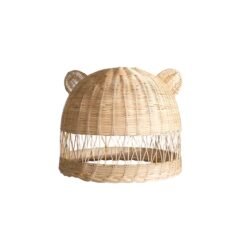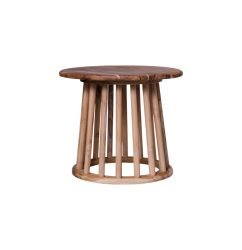Sustainability has become a central concern in today’s furniture industry, especially for rattan furniture companies that rely on natural, renewable materials. To build trust with buyers and comply with international standards, many companies are now developing formal sustainability reports. These reports help showcase their environmental, social, and ethical commitments, strengthening their brand image and market competitiveness.
1. Why Sustainability Reports Matter
A sustainability report goes beyond marketing claims. It provides measurable, transparent data about a company’s practices, showing:
- Responsible material sourcing
- Waste and emissions reduction
- Social impact in local communities
- Certifications and compliance with regulations
Such reports build confidence with international clients, especially in markets where sustainability is a purchasing priority.
2. Key Elements of a Rattan Furniture Sustainability Report
A professional sustainability report for a rattan furniture manufacturer should include:
- Material Sourcing: Details of how rattan is harvested sustainably, including legal compliance and reforestation efforts.
- Environmental Performance: Data on energy use, water use, emissions, and waste management during production.
- Social Responsibility: Worker welfare programs, fair wages, community development, and artisan support.
- Certifications: Proof of adherence to standards such as FSC, SVLK, or fair-trade certifications.
- Future Commitments: Clear plans for ongoing improvements in environmental and social practices.
3. Benefits of Sustainability Reporting
Investing in clear sustainability reporting brings multiple advantages:
- Stronger Brand Reputation — appeals to eco-conscious customers and buyers
- Better Access to Global Markets — many importers now require proof of sustainable practices
- Operational Improvements — identifying areas of waste or inefficiency
- Investor and Partner Confidence — showing long-term responsibility and risk management
4. Challenges in Reporting
While valuable, sustainability reporting is not always easy. Common challenges include:
- Collecting reliable data from supply chains
- Training staff to measure and report sustainability KPIs
- Meeting international reporting standards (e.g., GRI, ISO 26000)
Partnering with consultants or sustainability advisors can help companies overcome these hurdles.
5. Best Practices for Developing a Sustainability Report
To create an effective and credible sustainability report, rattan furniture companies should:
- Start with a clear sustainability policy
- Engage stakeholders, including suppliers and local communities
- Set measurable targets (energy use, emissions, certifications, etc.)
- Audit data regularly for transparency
- Communicate progress annually through a public report
Conclusion
Sustainability reports are no longer optional for rattan furniture companies seeking to thrive in the global marketplace. By documenting and sharing their environmental and social impacts transparently, these businesses can build trust, meet international buyer requirements, and protect the future of their industry.





